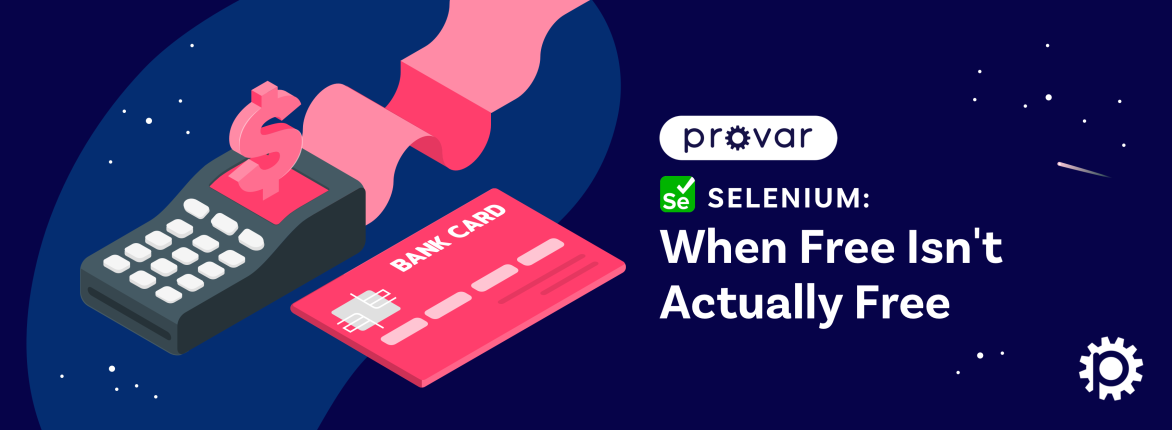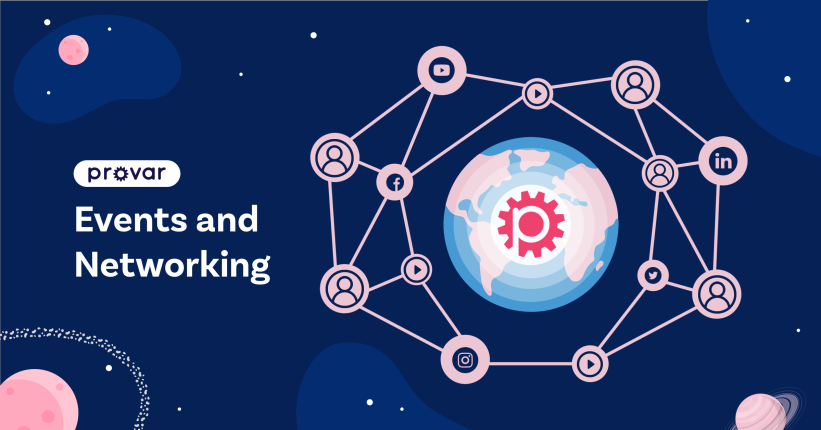Many factors contribute to the success or failure of a CRM implementation and why some implementations fail while others succeed. But, first, this article will discuss Salesforce In-App Guidance.
In a recent survey by Forrester and CustomerThink of professionals involved in CRM technology projects, they found these factors could be grouped into four categories: process, people, strategy, and technology.
In this post, I want to focus on the people aspect of Salesforce implementations, which 38% of the 414 respondents surveyed identified as a significant source of issues. More precisely, we will dive into the user adoption component, often given little attention when planning and successfully executing a technology project.
The Forgotten One, a.k.a. The End-User
The end user is the person who will ultimately use the product (e.g., Salesforce). As a result, you would think that they would play a fundamental part in any Salesforce implementation project. However, their voice and opinions are often not considered or replaced by assumptions about what they need, want, think, or feel. It is like planning a wedding without consulting the celebrants.

The solution to this problem is not simple, but the reward is knowing that you are working to implement a system your end users will want to use because it makes their job easier.
Here are some very high-level recommendations:
- Gain a deep understanding of how your users work (e.g., daily tasks and business processes they follow) and their pain points (e.g., manual tasks, slow and buggy tools).
- Give your users a seat at the table to influence decisions, take ownership, and become champions of change.
- Plan changes according to your company’s culture and appetite for change. Major implementations may not be the best way to introduce a new CRM or changes, but incremental and progressive rollouts may reduce risk and increase user acceptance.
- Set up a feedback loop with your users:
- Communicate, inform, and educate about features and changes.
- Receive opinions, criticism, new ideas, bug reports, etc…
- Then, improve the system to suit your users’ needs better, and go back to step 1.
Supporting User Adoption with Salesforce In-App Guidance
Open communication and helpful information are two critical drivers for user adoption. Users like to know how their tools will change so they can adapt how they work. They also appreciate useful learning material to understand how to continue using their tools.
Companies may email their users detailing impact changes to their systems and how they will impact users, and sometimes even provide one-off training sessions if the changes are too disruptive. However, as helpful as these communication and teaching methods may be, they can be too disruptive to users’ schedules and quickly forgotten.
This is why providing useful information inside Salesforce at the right moment (when needed) is such a powerful proposition. In-App Guidance aims to fulfill this urgent need for Salesforce end users.
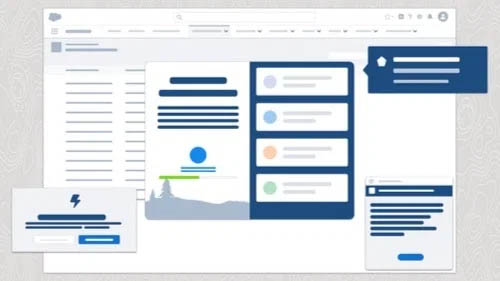
Salesforce In-App Guidance empowers admins to create prompts and walkthroughs that can be displayed on object record pages, home pages, new, edit, and clone record pages, including dialogs.
Salesforce In-App Guidance also allows admins to define learning paths that leverage Trailhead content and assign learning content to specific audiences.
To learn more about In-App Guidance, check out its short Trailhead module or watch this short video from the Salesforce Admins Youtube channel.
How to Create a Simple Walkthrough with In-App Guidance
Now that we understand the importance of user adoption and how In-App Guidance can help us achieve tremendous success with our Salesforce implementation and changes let’s build a quick walkthrough.
This walkthrough aims to introduce new users to Salesforce and show where things are and how to find them. Follow these steps to recreate the walkthrough on your org:
- Go to Setup > User Engagement > In-App Guidance.
- On the top right corner, click the Add button. This will open In-App Guidance Builder, where we can build our walkthrough.
- On the top right corner, click the Add button to add steps.
- Create these three steps from the right sidebar:
Step 1
| Prompt Type | Floating Prompt |
| Prompt Position | Bottom Center |
| Title | Welcome to Salesforce! |
| Body | Looks like this is your first time here. Let me show you around! |
| Dismiss Button Label | No, thanks |
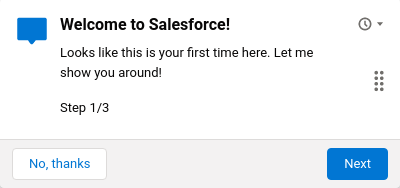
Step 2
| Prompt Type | Floating Prompt |
| Prompt Position | Top Left |
| Title | Look at all those tabs! |
| Body | The 9-dot icon allows you to choose an app (e.g. Sales Lightning). Each app shows a set of tabs (e.g. Home, Chatter, Accounts, etc…) |
| Dismiss Button Label | Dismiss |
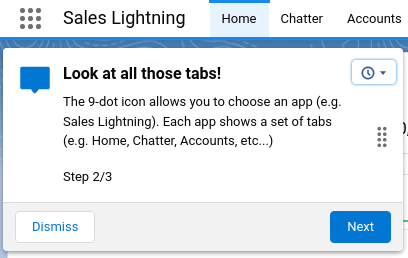
Step 3
| Prompt Type | Floating Prompt |
| Prompt Position | Top Right |
| Title | There’s more icons up there |
| Body | On the top right you can access learning materials, help articles, settings, notifications, and check out your own user profile. |
| Dismiss Button Label | Dismiss |
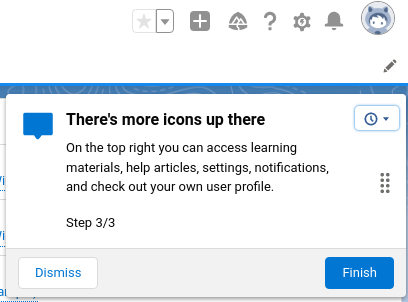
- Click the Save button and follow these steps:
- Leave the Action, Schedule, Profiles, and Permissions sections.
- In the Details section, enter a name like “Intro to Salesforce.”
- Click Save.
- Click Done.
Now, you can go to the homepage and check out how the first prompt appears on the screen, guiding you through the three steps we set up. Amazingly intuitive, right?
How to Test In-App Guidance with Provar
Because In-App Guidance consists purely of UI components, a UI testing tool like Provar is perfectly suited to verify that our walkthrough is being displayed as expected.
The screenshots below show you how to create a test case using Provar Test Builder easily. The test case navigates step by step, asserting that the right titles are present and in the correct order.
[smartslider3 slider=”2″]
Conclusion
With technology becoming increasingly an integral part of every company, companies must mitigate risks like low user adoption to ensure successful rollouts. Modern companies that don’t will realize that their end-users don’t want to use their provided tools, which will result in an enormous waste of time and money.
In-App Guidance is Salesforce’s solution to drive user engagement in their platform. Admins can define prompts and walkthroughs to guide users through their daily tasks and provide training materials on Trailhead.
Provar can enable and aid testers in ensuring that the prompts and walkthroughs appear when and as expected while also giving confidence to admins that their implementation was correct.
To learn more about how Provar can deliver unbreakable, polymorphic, intuitive E2E test automation coverage for your teams, contact us today.




